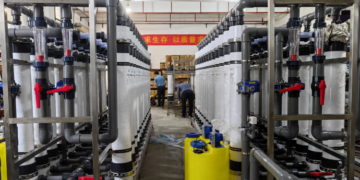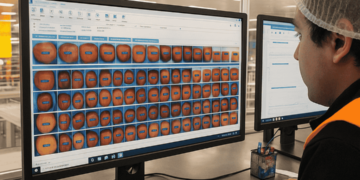Introduction
Precision farming integrates advanced technologies to enhance agricultural efficiency, productivity, and sustainability. Field mapping, a crucial aspect of precision farming, utilizes GPS, remote sensing, geographic information systems (GIS), and real-time analytics to optimize farm operations.
The adoption of field mapping in agriculture is revolutionizing crop management, soil analysis, resource allocation, and yield optimization. Farmers leverage satellite imagery, drone technology, and AI-driven data processing to make informed decisions that minimize waste and maximize output.
The Evolution
Field mapping originated as a manual land assessment practice, relying on physical observations and traditional soil sampling. The introduction of GPS and GIS technology transformed mapping, enabling digital terrain analysis and precise farm planning.
Remote sensing advancements, including satellite and drone-based imaging, improved crop health monitoring, soil moisture assessment, and pest detection. Machine learning algorithms now process real-time farm data, offering automated recommendations for irrigation, fertilization, and harvest scheduling.
Recent innovations in sensor-based mapping, AI-powered predictive analytics, and real-time data synchronization continue to expand precision farming applications, making decision-making more data-driven and efficient.
Market Trends
Several trends are shaping the field mapping precision farming market. Drone-based imaging solutions are gaining traction for high-resolution field analysis and automated monitoring. AI-driven analytics and cloud-based farm management systems are optimizing resource allocation and crop yield predictions.
The rise of IoT-powered sensors in soil and weather monitoring enhances farm sustainability and climate adaptation strategies. Blockchain integration for transparent data sharing is improving traceability and accountability in agricultural supply chains.
Government initiatives promoting precision agriculture subsidies and smart farming technologies are accelerating adoption. Smart irrigation systems and automated farm machinery are integrating real-time mapping data to improve operational efficiency.
Challenges
Despite advancements, the market faces challenges. High initial investment costs hinder accessibility for small-scale farmers. Data privacy concerns related to farm analytics and cloud storage require robust cybersecurity solutions.
Limited technical expertise among farmers affects adoption, necessitating training programs and digital literacy initiatives. Connectivity issues in rural regions impact real-time data synchronization, requiring enhanced network infrastructure.
Regulatory hurdles related to drone usage and remote sensing data collection pose constraints on large-scale deployment. Standardization concerns among mapping technologies create compatibility challenges across different precision farming systems.
Market Scope
The field mapping precision farming market spans crop management, soil health assessment, irrigation planning, pest control, and precision yield forecasting. Applications extend to large-scale farming, horticulture, livestock management, and climate-adaptive agriculture.
North America leads the market, driven by strong agricultural technology investments and government-backed smart farming initiatives. Europe follows closely, benefiting from sustainability-focused agricultural policies. Asia-Pacific is witnessing rapid expansion, fueled by growing food demand, smart agriculture adoption, and infrastructure improvements.
Market Size
Financial projections indicate steady growth, supported by expanding digital agriculture adoption, advancements in AI-powered farm analytics, and rising investment in precision farming innovations. Increasing collaborations between farm technology firms, satellite data providers, and agri-tech startups further accelerate market expansion.
The integration of sensor-driven field mapping solutions and autonomous farming equipment contributes to long-term industry growth. Government-backed initiatives promoting agricultural modernization and digital farming infrastructure strengthen market reach.
Factors Driving Growth
Several factors contribute to market growth. Rising demand for data-driven agricultural solutions boosts precision mapping adoption. Advancements in drone imaging, IoT-powered sensors, and AI-driven farm analytics enhance decision-making.
Government funding for smart agriculture and climate-resilient farming accelerates market expansion. Integration of real-time mapping systems with automated farming machinery optimizes operational efficiency. The shift toward sustainable and resource-efficient farming techniques reinforces long-term industry viability.
Source :https://www.databridgemarketresearch.com/reports/global-field-mapping-precision-farming-market
Other Trending Reports






















